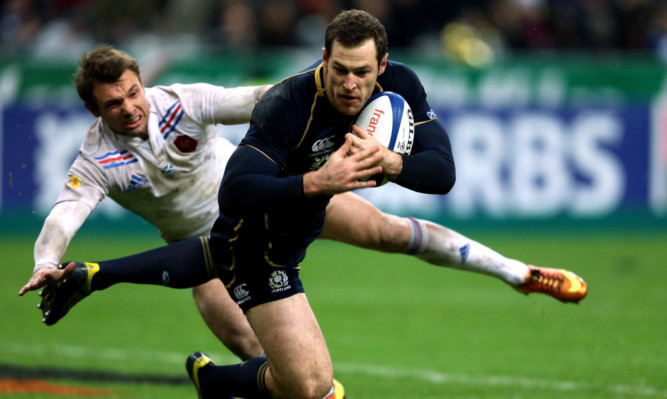Scotland must learn to attack with the same ferocity as they defend if they are to establish themselves as contenders for next year’s RBS 6 Nations, according to winger Tim Visser.
The Dutch-born adopted Scot finished the tournament as the Dark Blues’ joint top try scorer with two touchdowns, level with Sean Maitland and Stuart Hogg.
The pacey Edinburgh back the RaboDirect Pro12’s joint all-time top finisher with 48 scores was called up for Scotland last summer by former boss Andy Robinson with a view to adding a potent threat to the side’s forward play.
But it was his bravery and strength in the tackle that proved to be his most useful asset to the side, now led by caretaker coach Scott Johnson.
Visser’s efforts at the back were matched by his team-mates for much of the tournament. The 12-8 win against an Ireland side that enjoyed a first-half possession count of almost 80% yet struggled to cross the whitewash was the clearest example of their resolute attitude.
But Visser says this intensity must be replicated in attack if Scotland are to improve on their final third-placed ranking.
“The strange thing about this campaign for us was that I spent more time defending than attacking, especially in the Ireland game.
“If you looked at the stats they had all of the ball. It was unbelievable. But our defence has had to improve, and it has done.
“If you look back to the autumn and where we are now, you can see all the work our defence coach Matt Taylor has done with the individuals and the team as a whole.
“We are now a better defensive unit. In the autumn we would not have been able to handle a lot of the stuff that has been thrown at us. Now the next step is for us to keep hold of our own possession.”
Despite impressive defensive displays, Scotland still wrapped up their Six Nations campaign with defeats to Wales and France.
Having recorded their first set of back-to-back wins since 2001 by beating Italy and then Ireland, it was a disappointing end to what had looked to be a promising championships.
The Scots’ 23-18 defeat in Paris was especially hard to take considering their 6-0 half-time lead and the impressive resistance they had put up to a series of determined assaults from Les Bleus.
The one consolation was Visser’s late try, set up by a burst from Hogg. The winger was pleased he was able to carry out the orders handed to him by Johnson who has yet to confirm whether he will make his interim role at Murrayfield permanent.
“Scoring is something that will always come through in my game. If somebody is near the try line I’ll be close in as well,” Visser said. “I’m always there when somebody is creating opportunities, and it’s important that aspect stays there.
“It’s something I’ve always been confident of in my game and it’s something I can rely on. Scott Johnson said to me before that he expects me to finish things when I get the chance, and I showed against France that’s what I can do.
“But it’s more about creating opportunities for us, and that’s a lot more important looking forward.”
